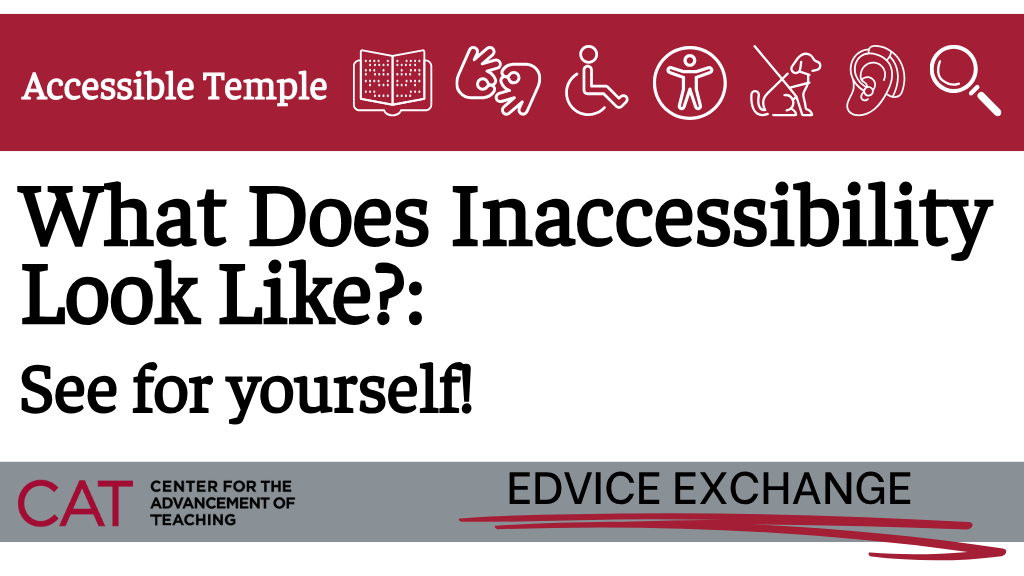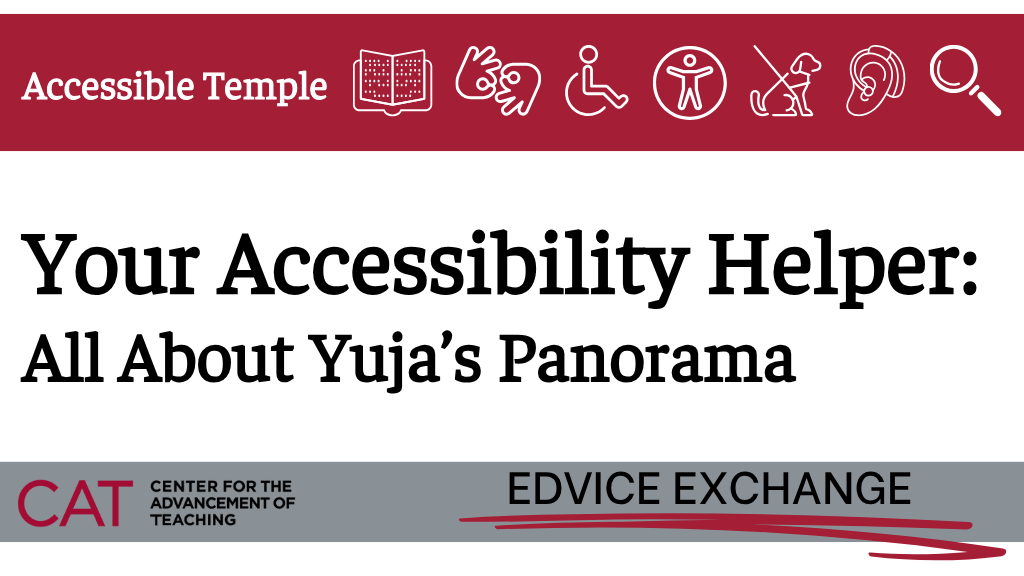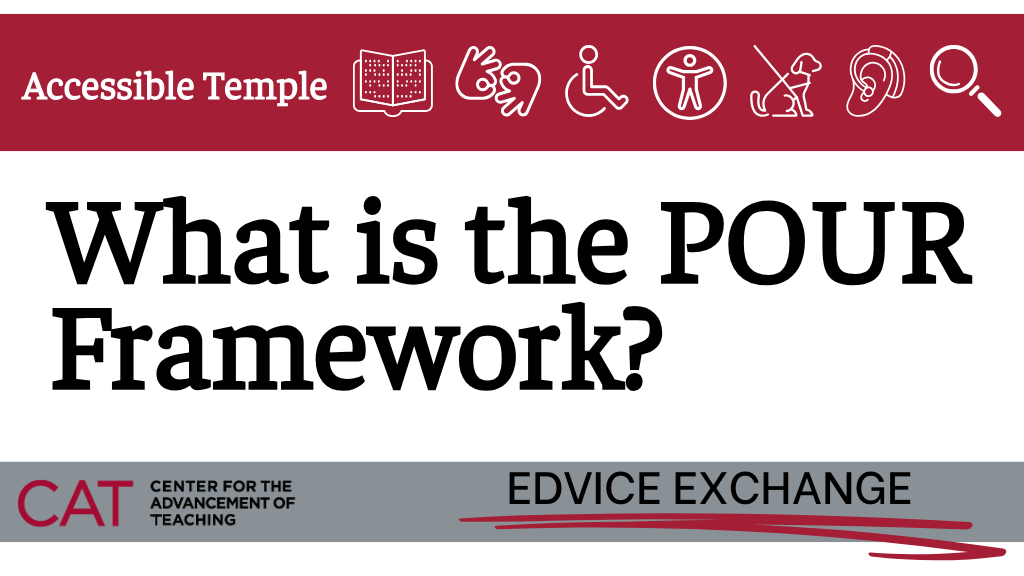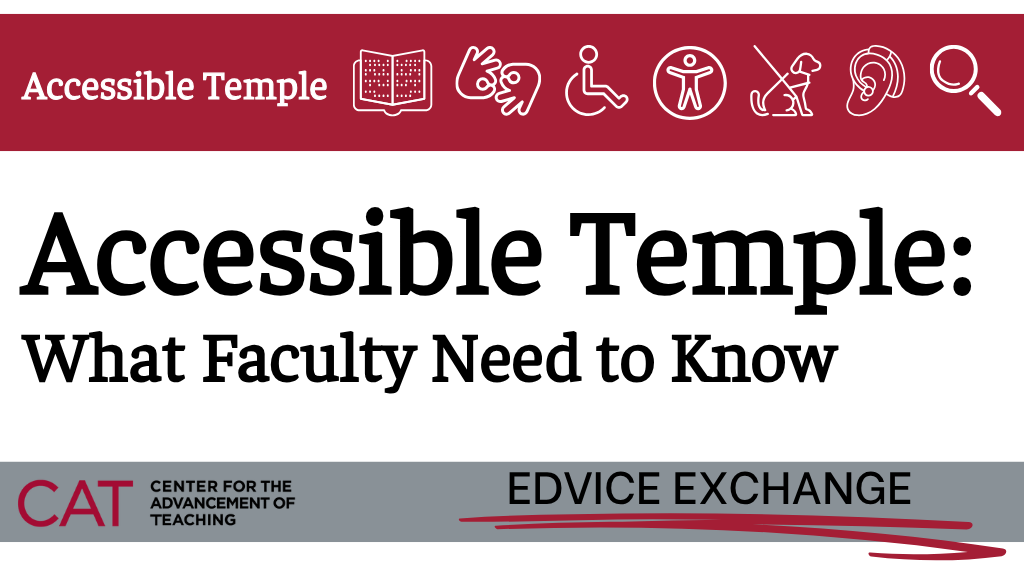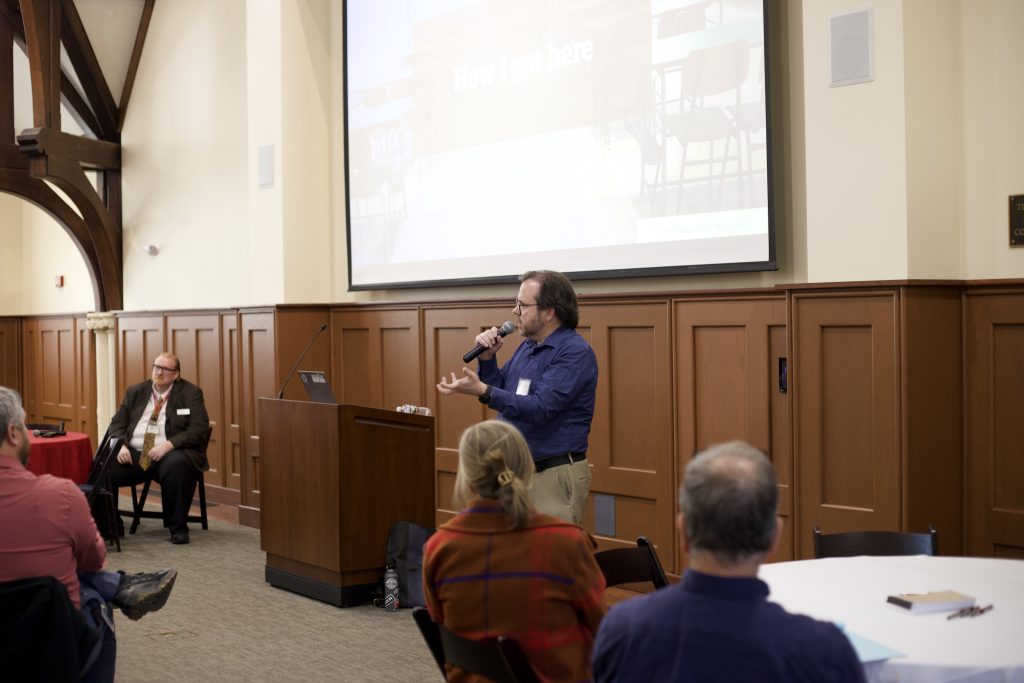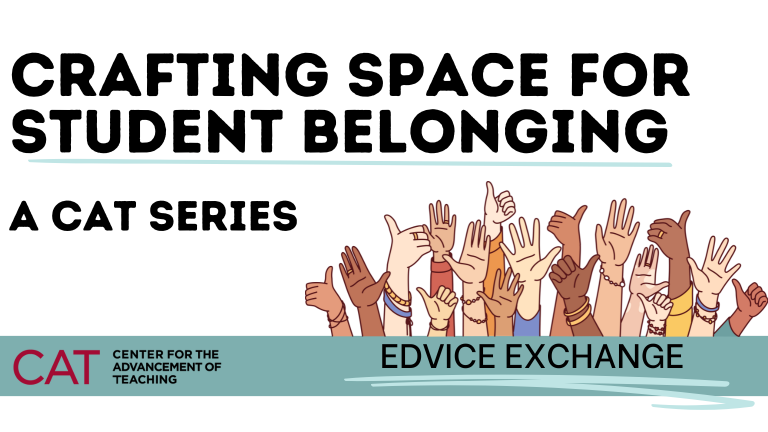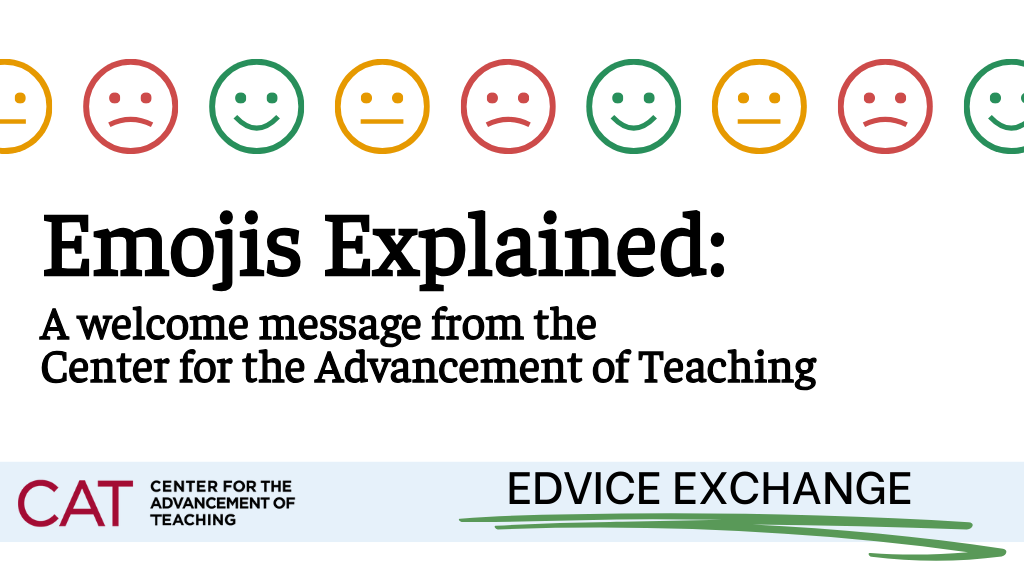
Dear Colleagues,
Welcome to the fall 2025 semester! Over the past weeks, as you created and launched your Canvas courses, you likely noticed the addition of emoji icons beside item titles in Canvas modules. This is not the universe judging your course content. As part of the Accessible Temple initiative, Temple has adopted Yuja’s Panorama, a tool that assesses whether items within Canvas meet digital accessibility best practices and offers suggestions for remediation. While thinking about digital accessibility may be new to many of us, providing access to students is in Temple’s DNA. Since the founding of this institution, Temple faculty members have been in the business of opening doors for our Owls. Through the classes you teach, the mentorship you provide, the relationships you build and the connections you forge, you create possibilities for your students. You help them accomplish their goals but also to access new conceptual and professional horizons.
Accessible Temple challenges us to extend that same dedication and care to addressing the accessibility of our digital course materials. When a student can’t use the assistive technologies they rely upon to access course materials, when our Canvas courses are confusing or hard to navigate or when students have to spend more time interpreting the assignment instructions than they spend accomplishing the assignment, their experience of Temple as a space that truly honors diversity is diminished. In preparing programming for the Accessible Temple initiative, we here at the CAT realized how much we ourselves had to learn about accessibility. As we have educated ourselves, we have built new habits and ways of thinking about how we create digital materials, and we strive to support you in doing the same.
We invite you to take advantage of our Accessible Temple resources and programming, and for those seeking information and support on other teaching-related topics, we continue to offer workshops, consultations and other services to all Temple faculty and teaching assistants.
Accessible Temple
- Accessibility Series and All-Day Academies– These sessions will provide all the information and tools necessary to make your courses accessible. The three-part accessibility series presents the same information as is covered in the all-day academies. Using the POUR framework for accessibility (Perceivable, Operable, Understandable, Robust), the CAT team will lead you through all of the new requirements for accessibility that will make our campus more inclusive. Included will be training on using Panorama.
- Drop-In Clinics– The CAT is offering dedicated drop-in clinics for those who have completed an accessibility intensive or the accessibility series. You will receive hands-on assistance without requiring an appointment.
- Yuja’s Panorama– Panorama is an accessibility checker that is enabled in your Canvas course. It provides guidance in identifying inaccessible materials and assists in remediating materials that are not accessible but misses some accessibility features. Complete our accessibility series to learn the “why” behind what Panorama flags and to build habits that will allow you to create accessible digital materials in the first place.
- Accessible Temple website– Learn more about the Web Content Accessibility Guidelines (WCAG) and stay up-to-date with new resources the CAT is offering.
- CAT Tips– Subscribe to the CAT’s YouTube channel so you don’t miss our fall series of CAT Tip videos focusing on accessibility.
- Micro-credentials– By completing an accessibility intensive or the accessibility series, you will earn the Digital Accessibility Micro-Credential, a micro-credential that demonstrates your newfound knowledge and skills. The enhanced Digital Accessibility Champion Micro-Credential includes the requirements for the Digital Accessibility Badge as well as additional faculty development on Universal Design for Learning.
- Blog posts– Edvice Exchange posts that break down key concepts and introduce practical tools. New posts will be added throughout the semester.
Receiving Our Emails
The CAT shares information on our programs and services regularly using Constant Contact. If you have not been receiving emails from us, check your spam folder for emails from the sender “cat+temple.edu@ccsend.com” and select “Not junk” to redirect emails back to your inbox. If you are not receiving any emails from us, please use our email list sign-up form to be added to the list. You can, of course, unsubscribe from the Constant Contact emails via the “unsubscribe” link available on each email.
CAT Services and Resources
We offer free services to full- and part-time faculty and graduate teaching assistants across all of Temple’s campuses. These services include:
- One-on-one consultations on teaching and educational technologies.
- Confidential classroom observations and small- and large-group instructional diagnosis.
- In-person and virtual educational technology assistance.
- Online resources including our website and our EDvice Exchange blog.
- Reservable rooms dedicated for faculty and staff to work independently, facilitate meetings or collaborate on a project.
- The new CAT Syllabus Template and updated Canvas Course Template.
- CAT Micro-Credential Program.
CAT Locations and Hours of Operation:
Main Campus CAT: TECH Center (Bell Building), Suite 112
- Office Hours: Monday through Friday, 8:30 AM-5:00 PM
- EdTech Lab Hours: Monday through Friday, 8:00 AM-4:30 PM
Health Science Campus CAT: Student/Faculty Technology Center, Room 200
- Office & EdTech Lab Hours: Mondays and Thursdays: 8:00 AM-4:30 PM
Ambler Campus CAT EdTech Lab & Workspace: Ambler Learning Center, Room 301
- Hours: Monday through Thursday: 8:30 AM-10:00 PM; Friday: 8:30 AM-5:00 PM
(Note: This space is for faculty use only. There are no CAT consultants on site.)
Virtual EdTech Lab: held via Zoom
- Hours: Monday through Friday, 8:00 AM-4:30 PM
Workshops, Webinars, Institutes, Book Groups and Events
There are many exciting workshops, webinars, institutes, book groups and events coming up!
- Workshops on a wide variety of topics related to instruction and course design. See the attached Fall 2025 workshops calendar for a full list of programs for the upcoming semester.
- Special events such as the Annual Faculty Conference in January. Keep an eye out for our call for AFC poster, breakout session, and lightning talk proposals in September!
- Programs such as Faculty Learning Communities and the Provost’s Teaching Academy.
- Weekly tips and updates on CAT’s social media (Facebook, Instagram and YouTube).
If you have questions about the CAT or our services, please don’t hesitate to:
- Email cat@temple.edu
- Call 215.204.8761
- Visit us at one of our locations
We hope to see you at the CAT!
